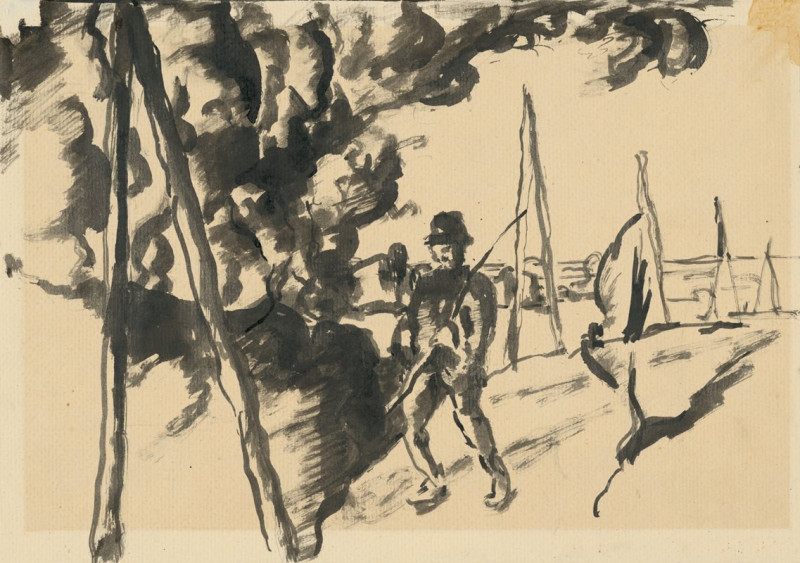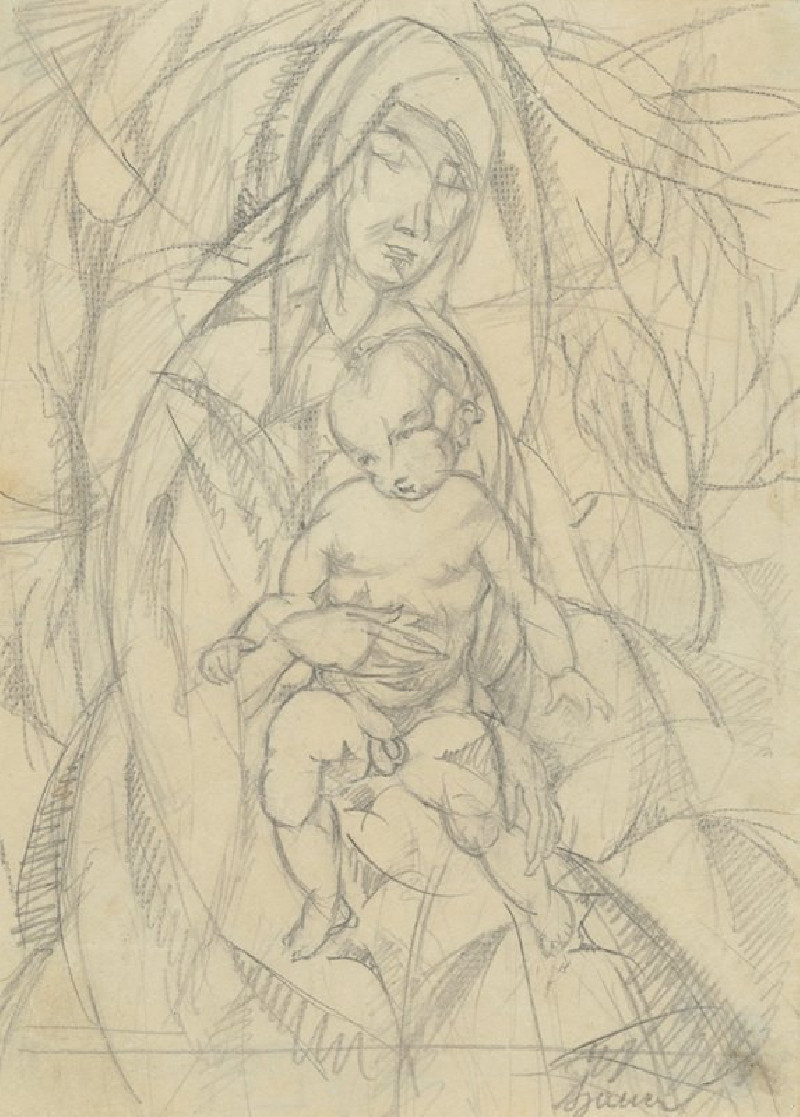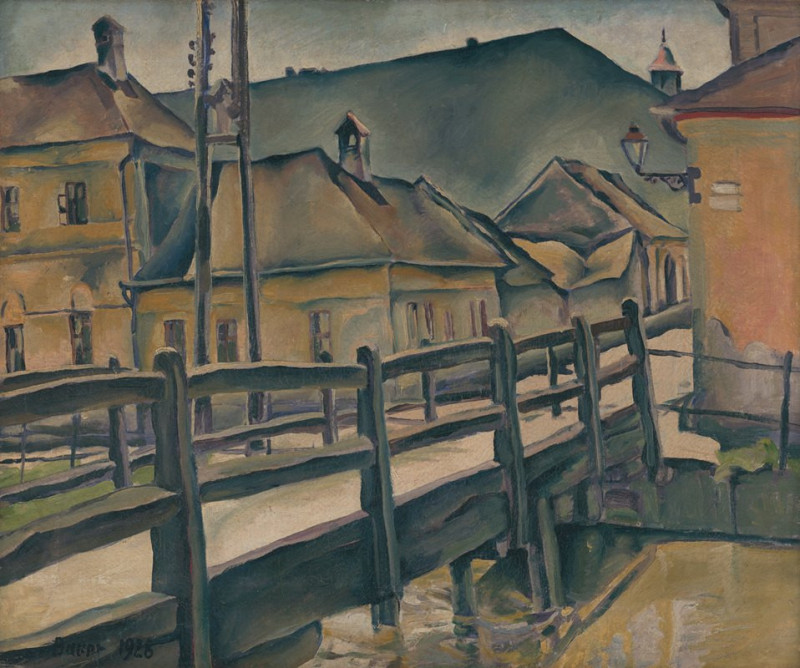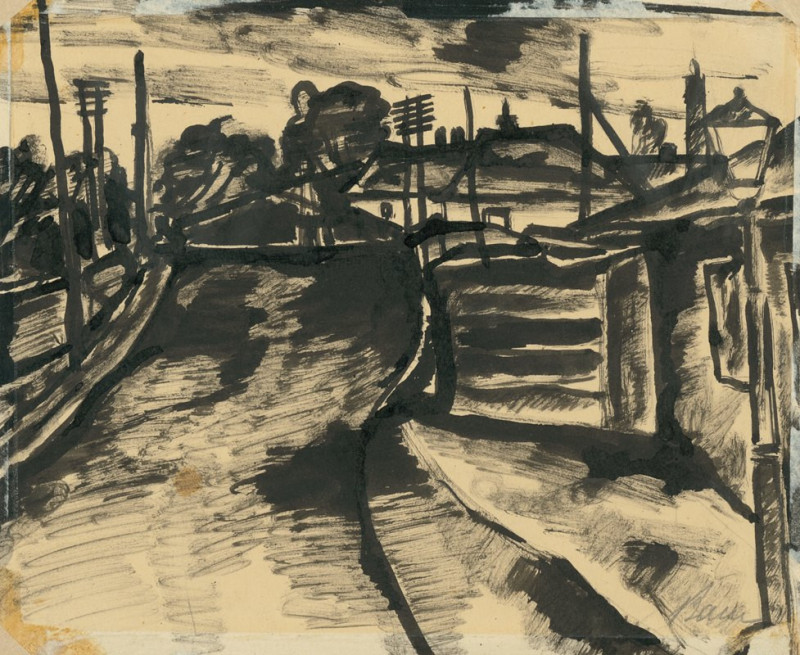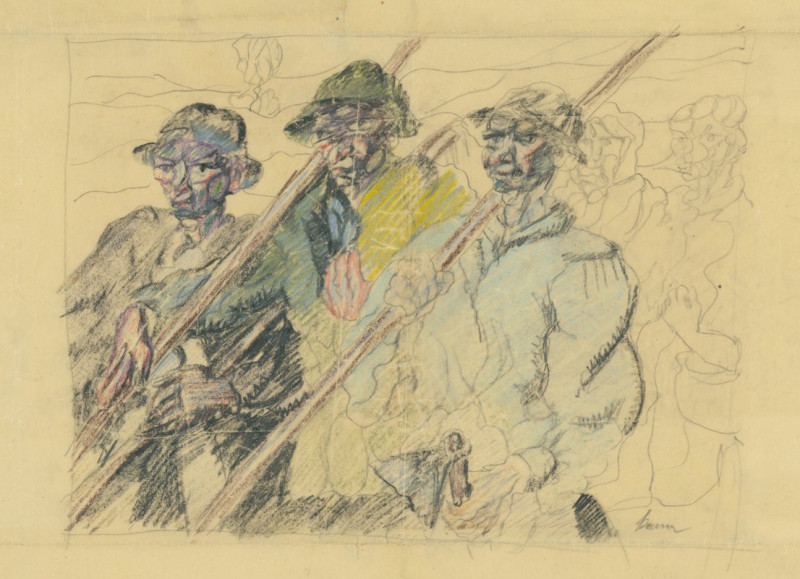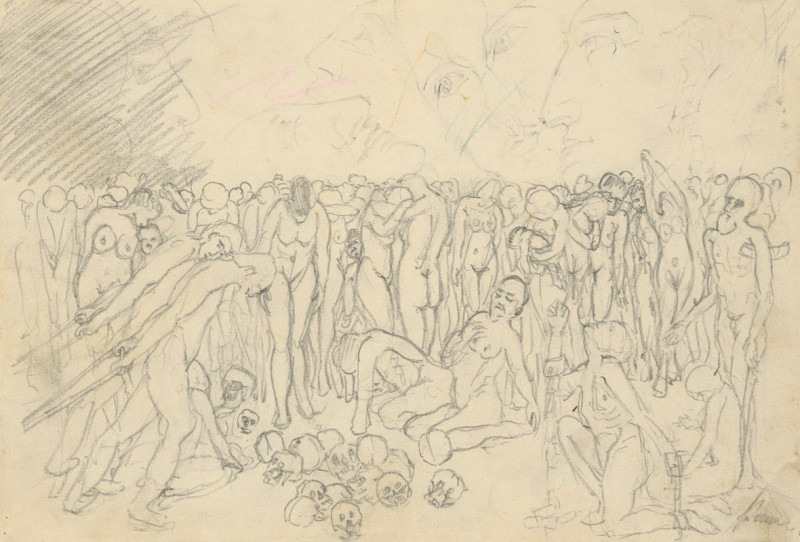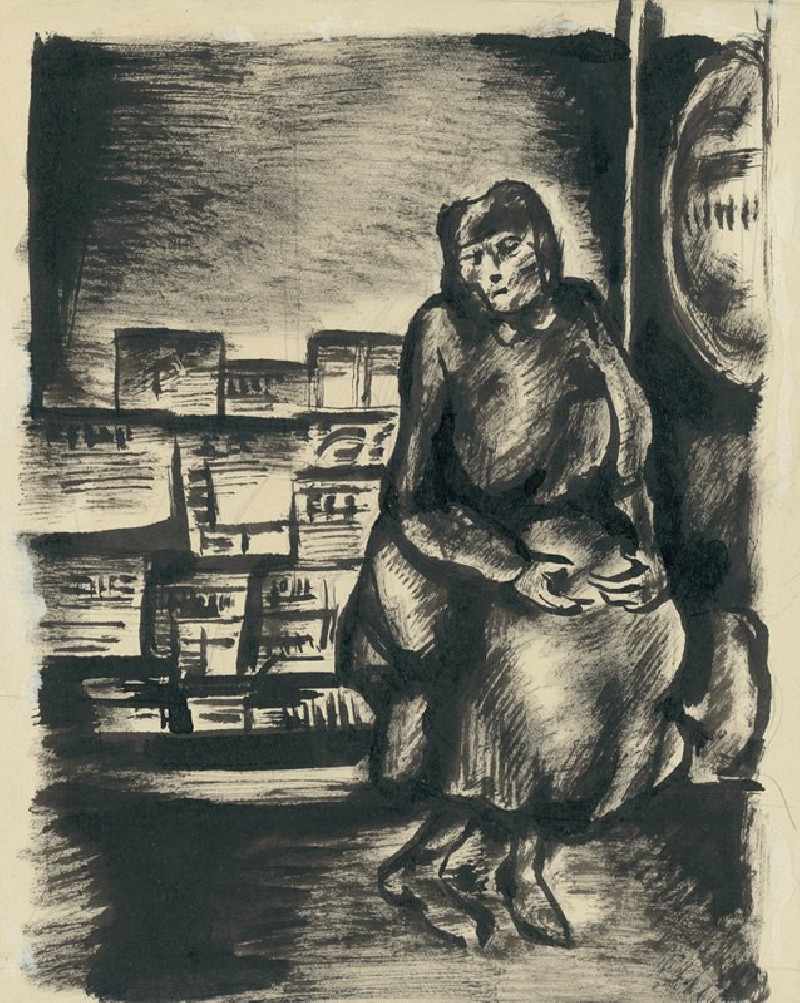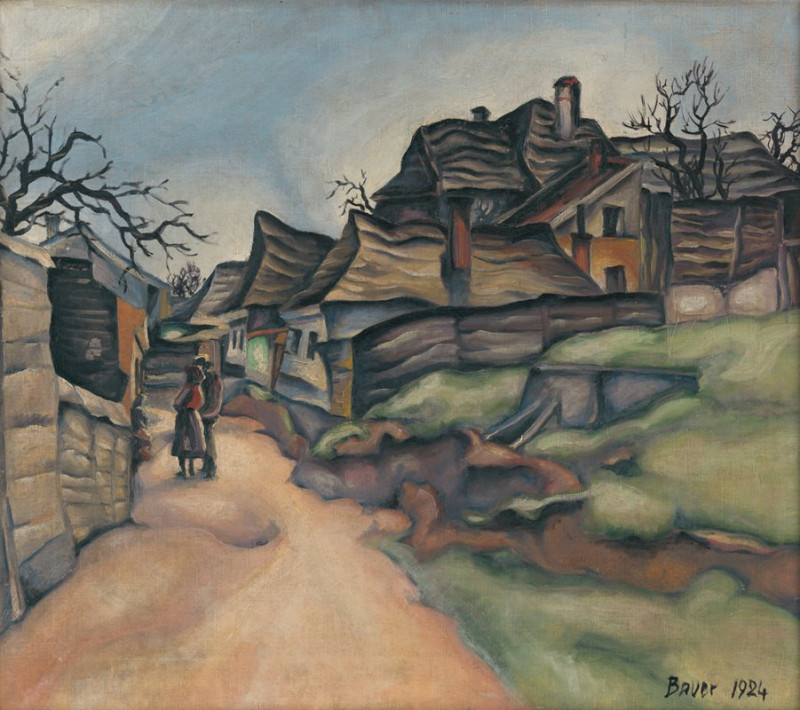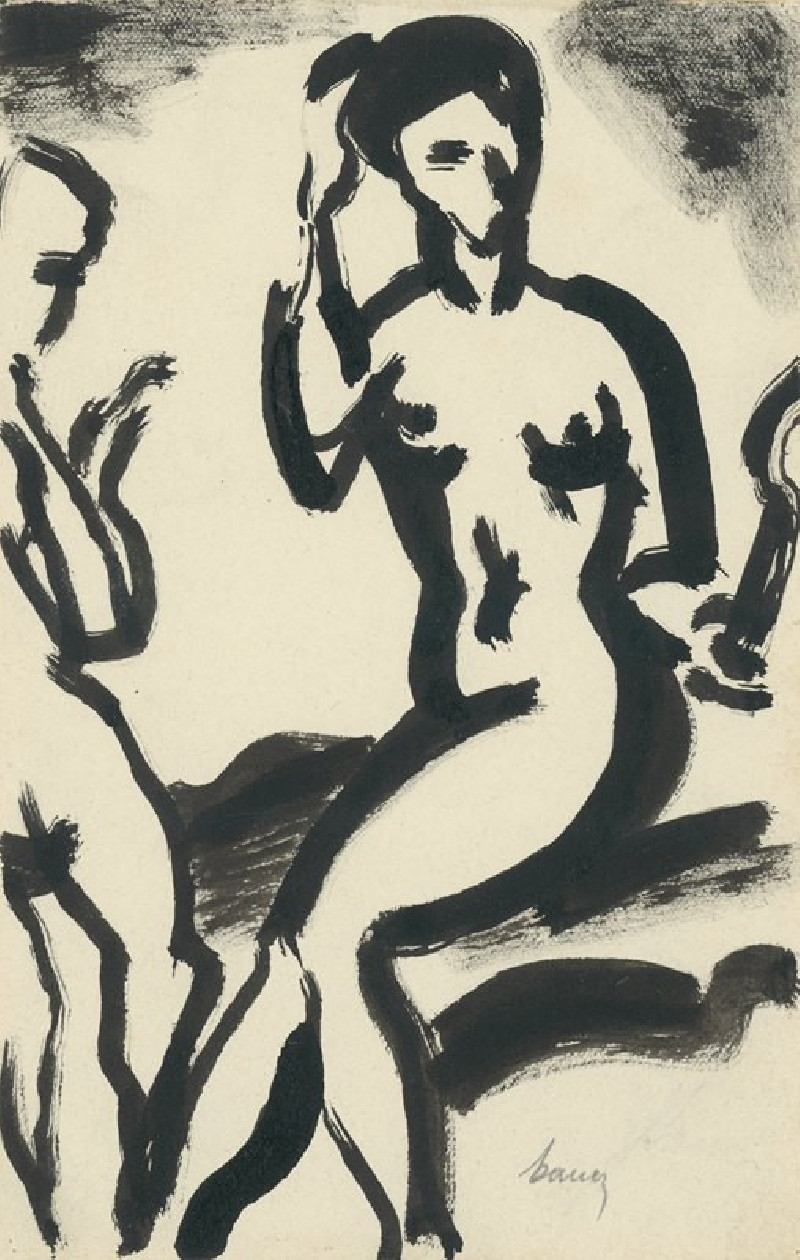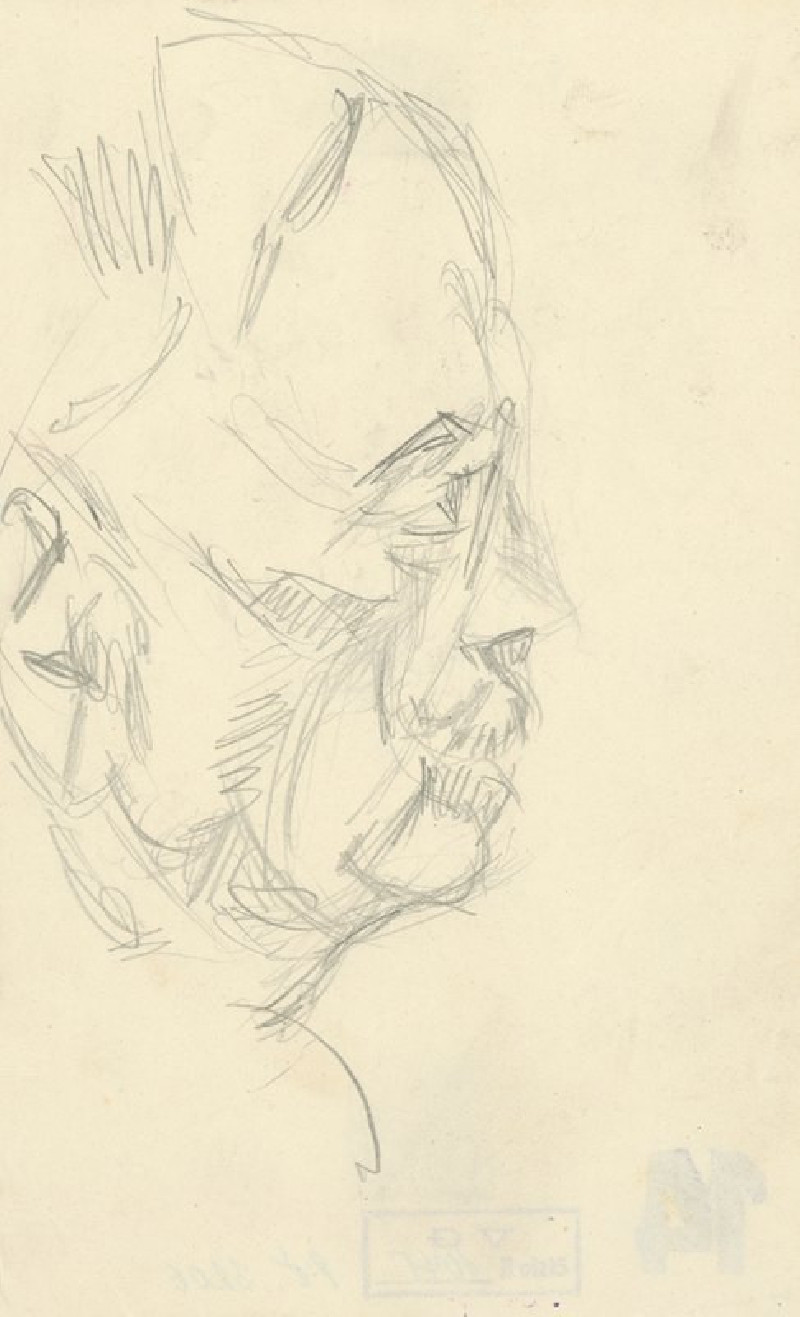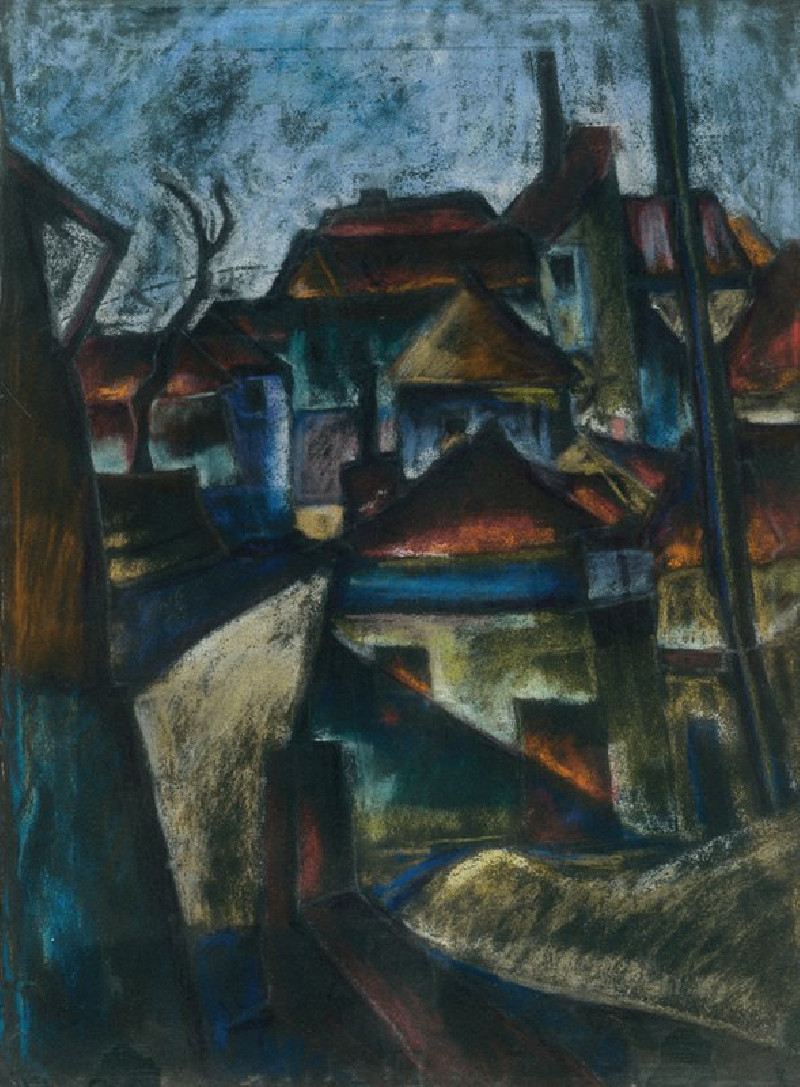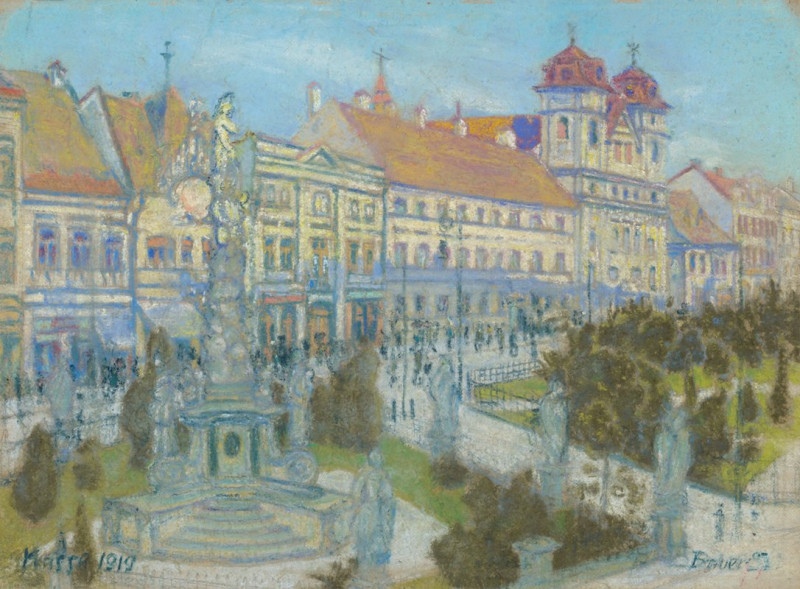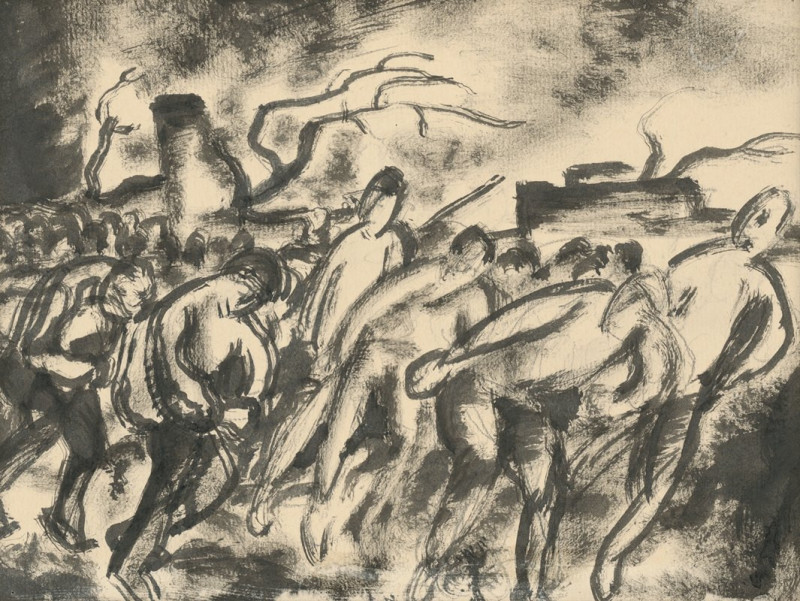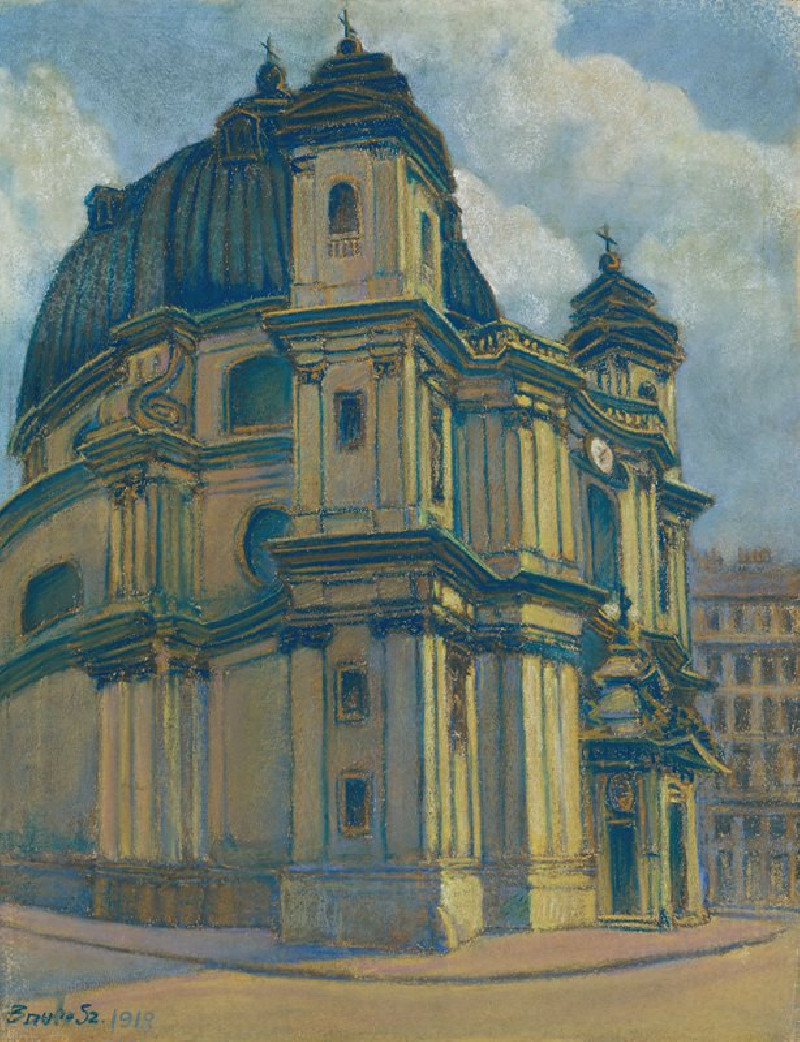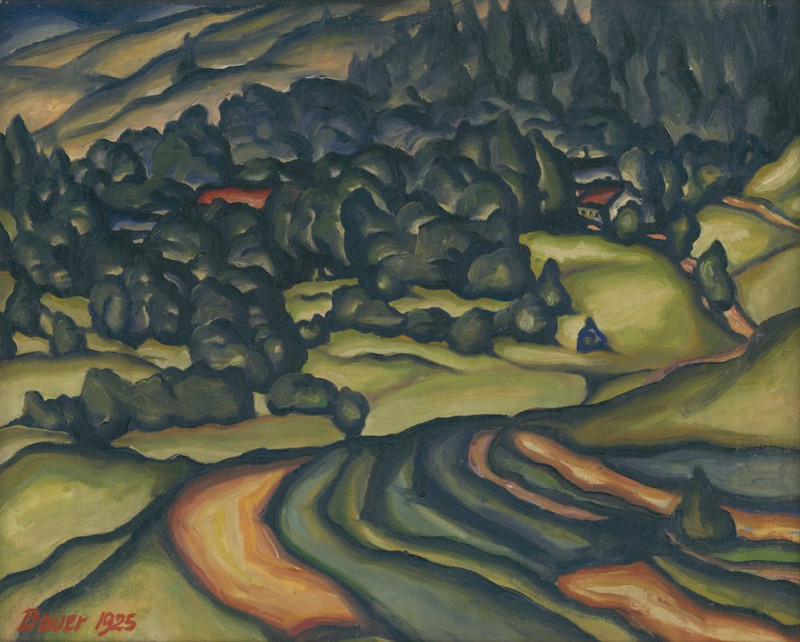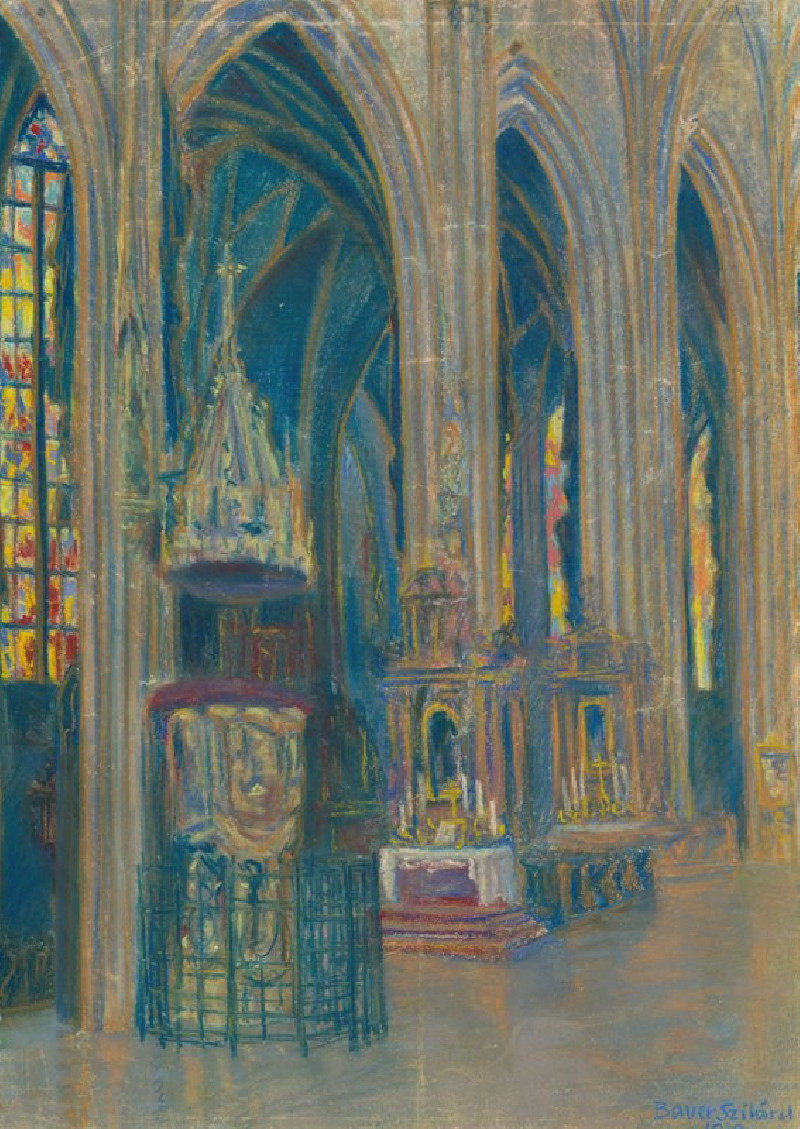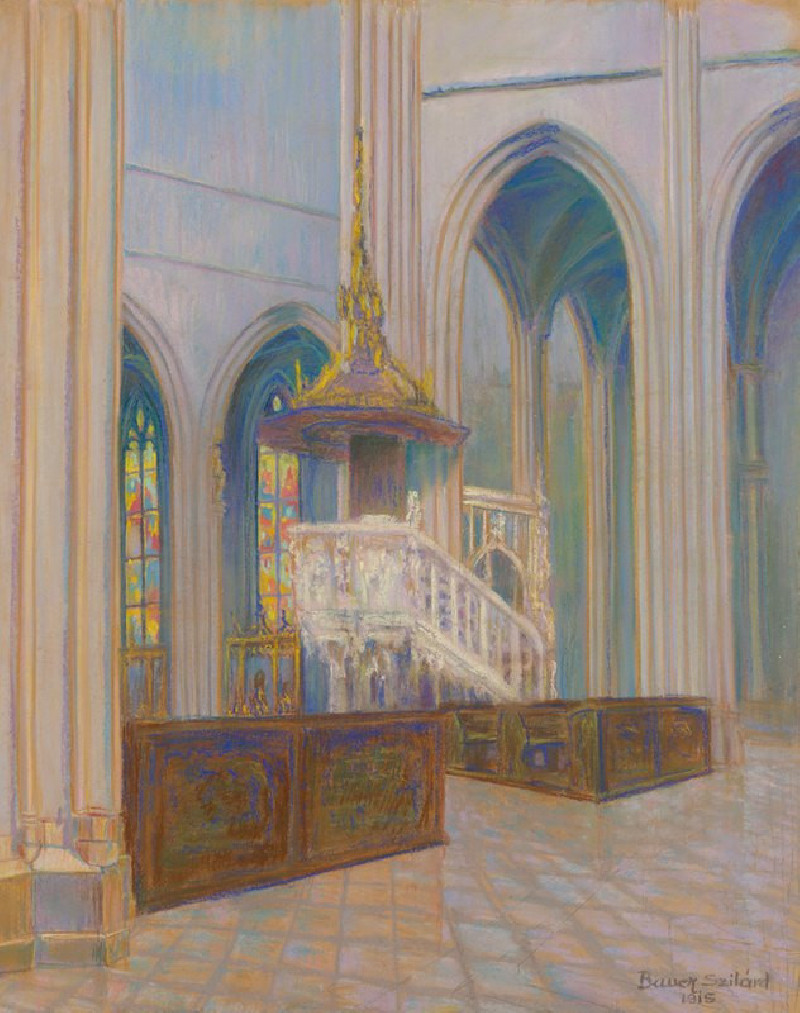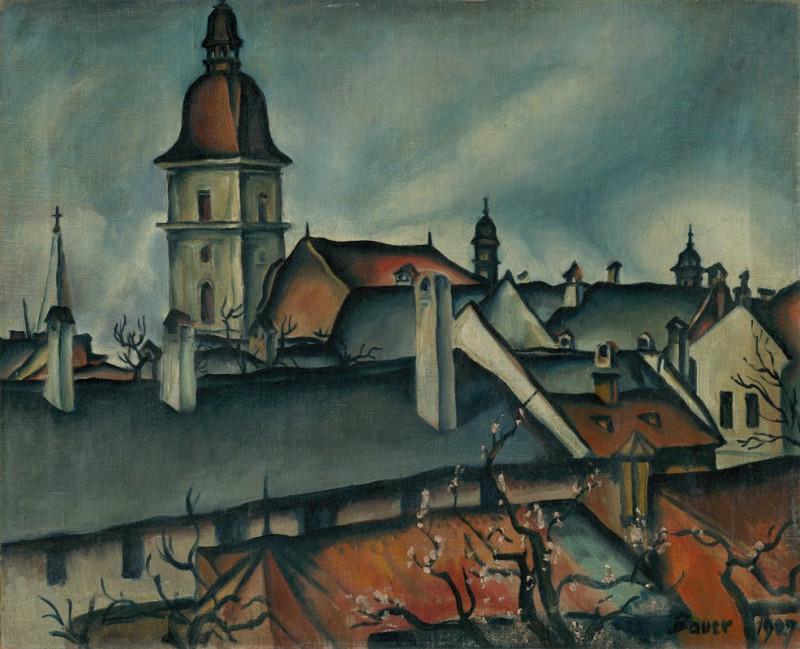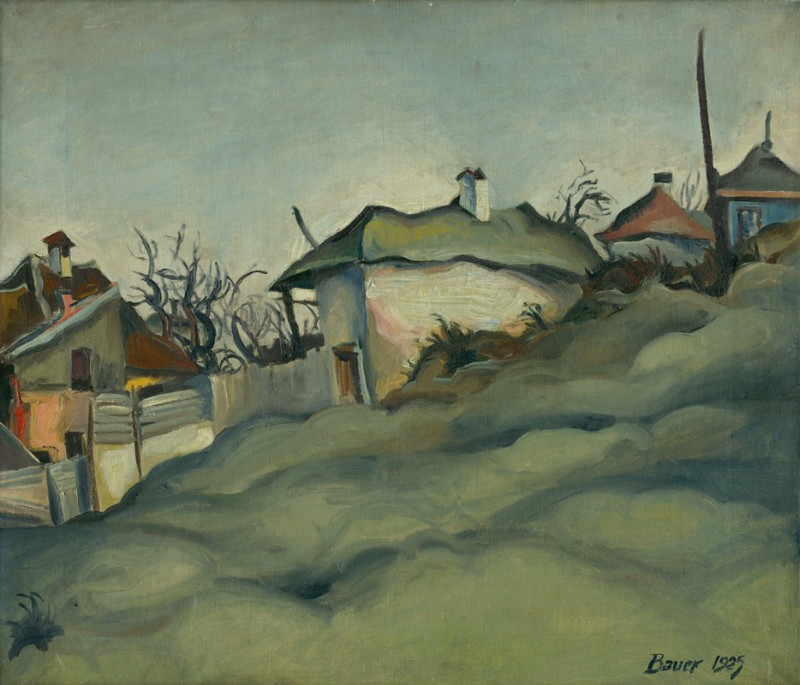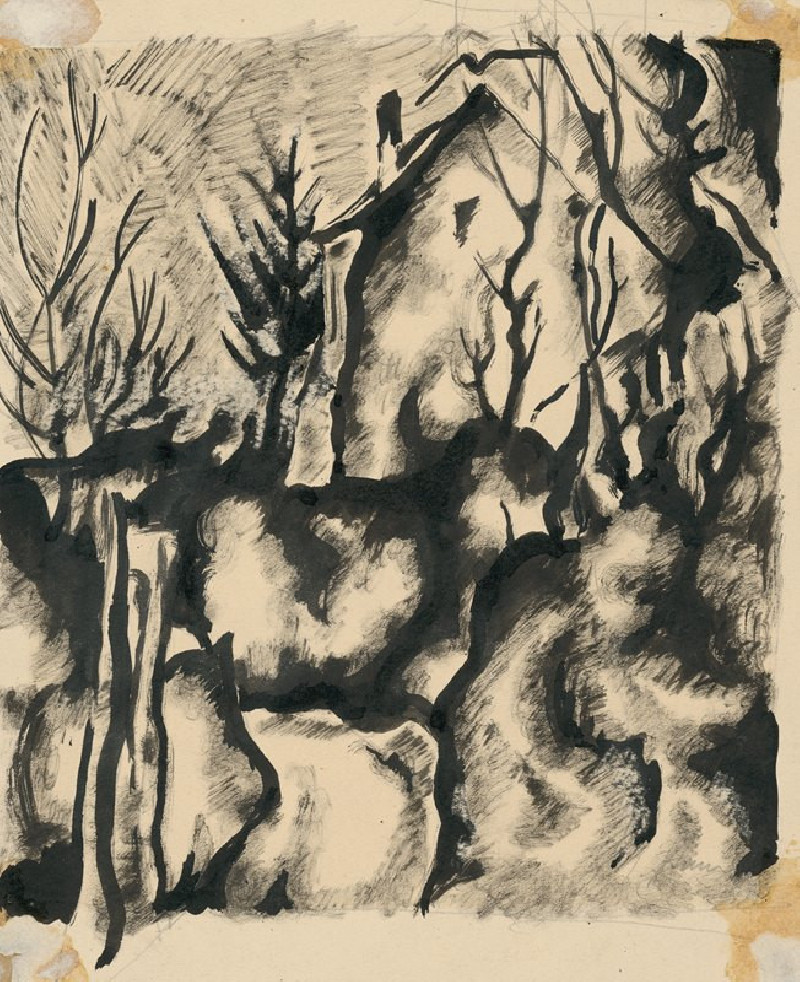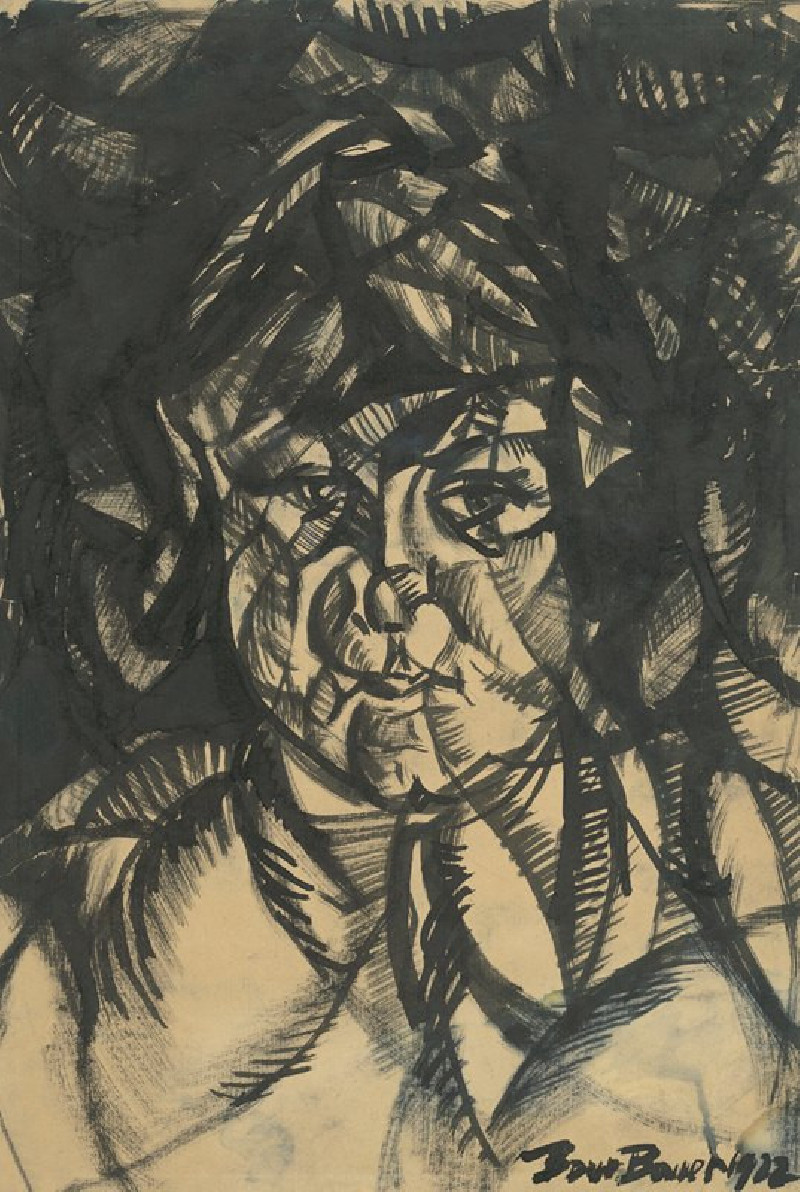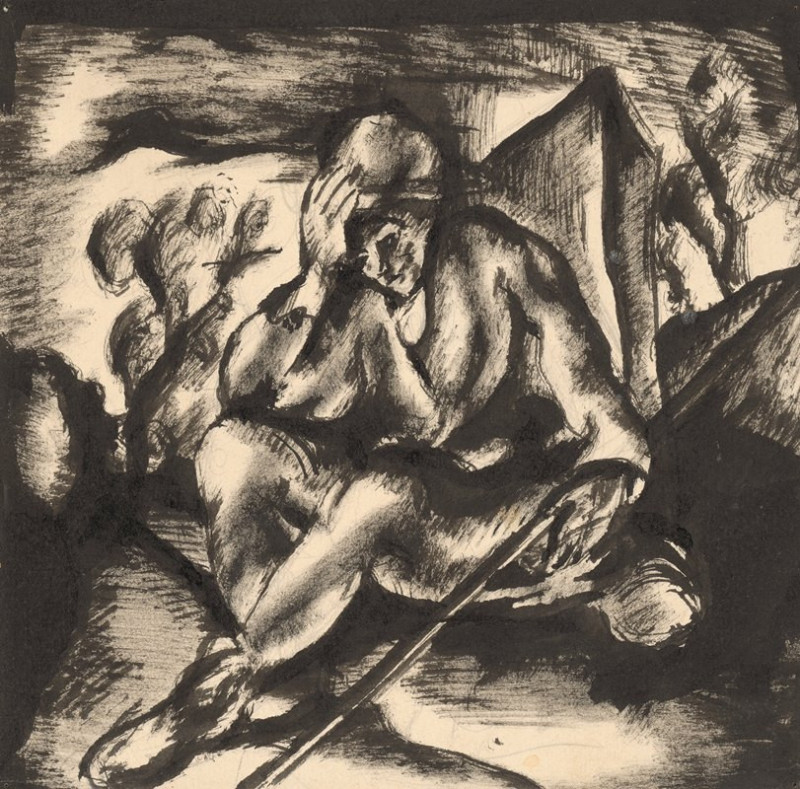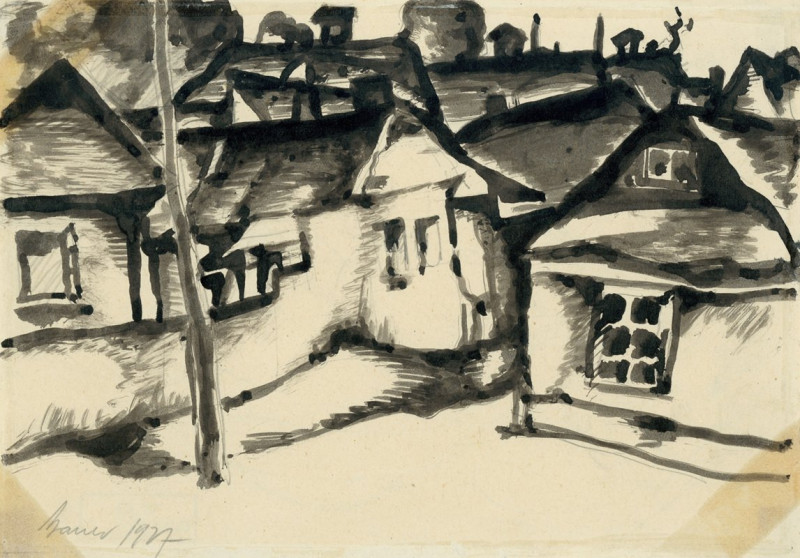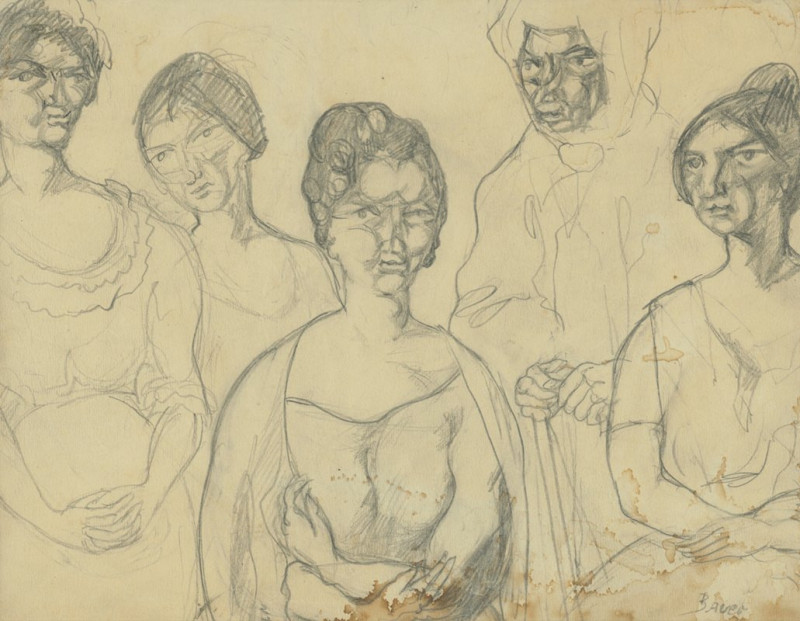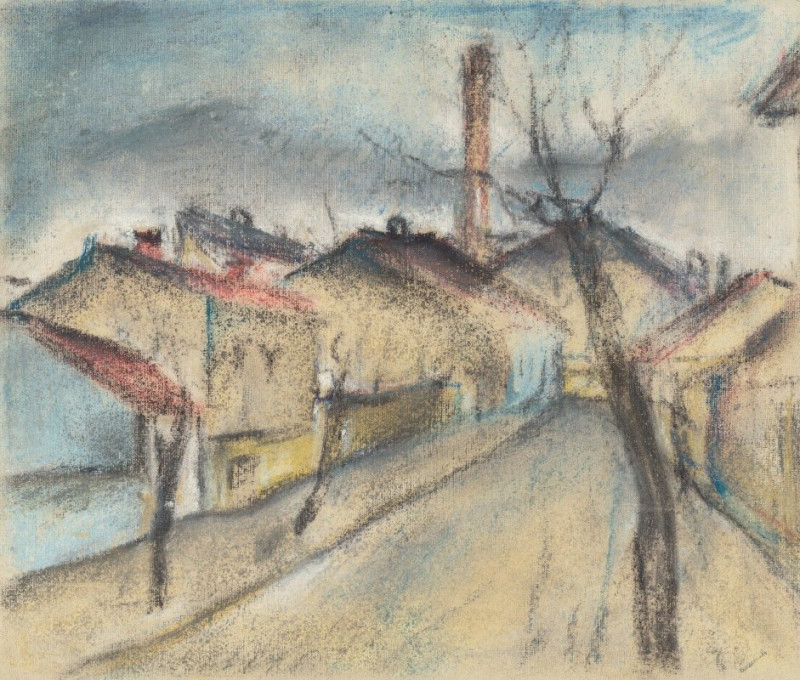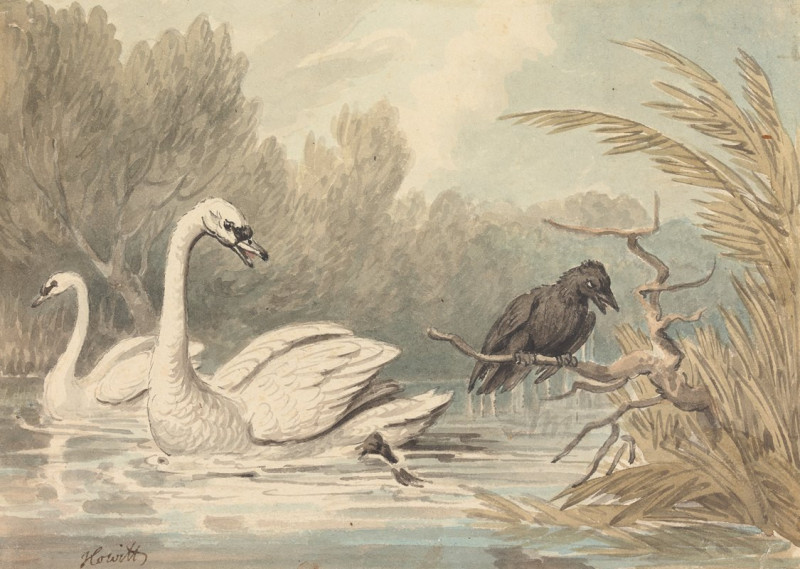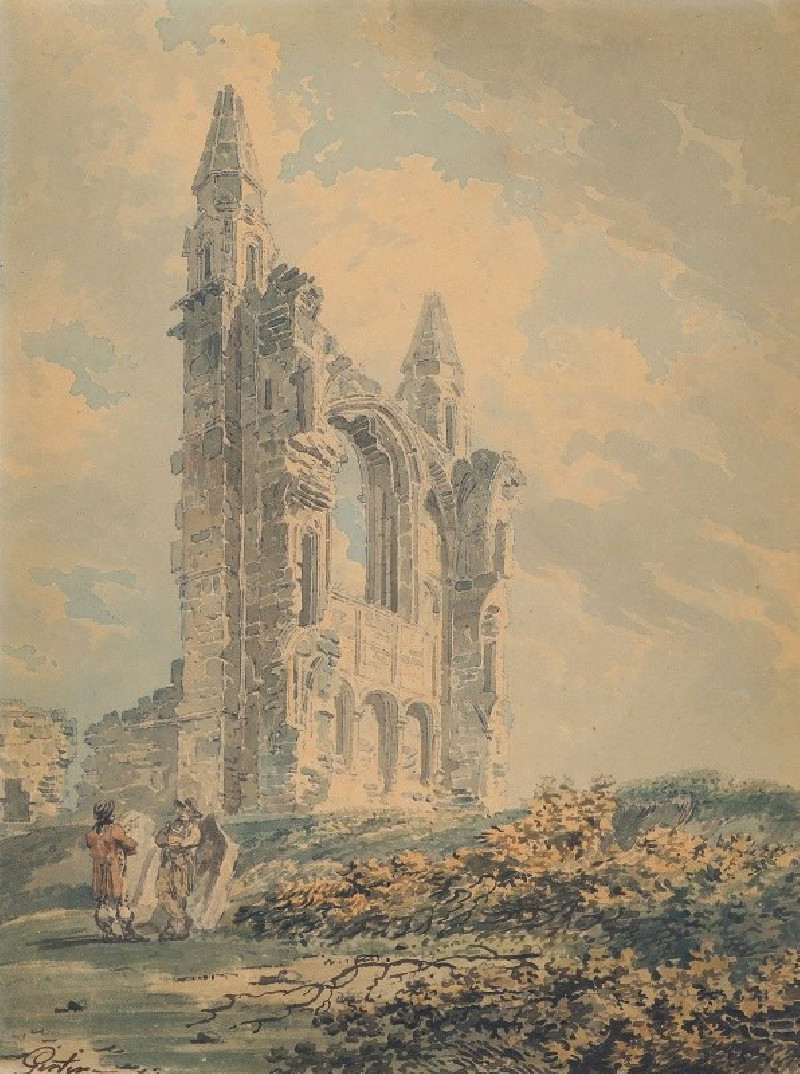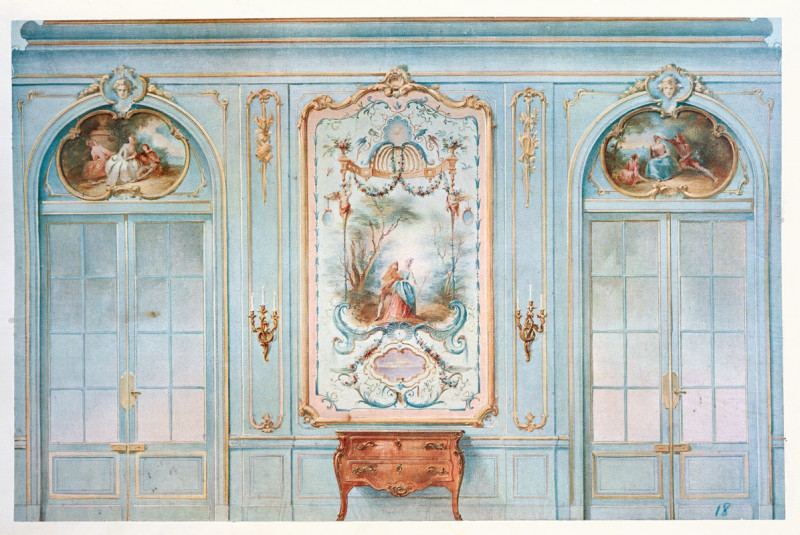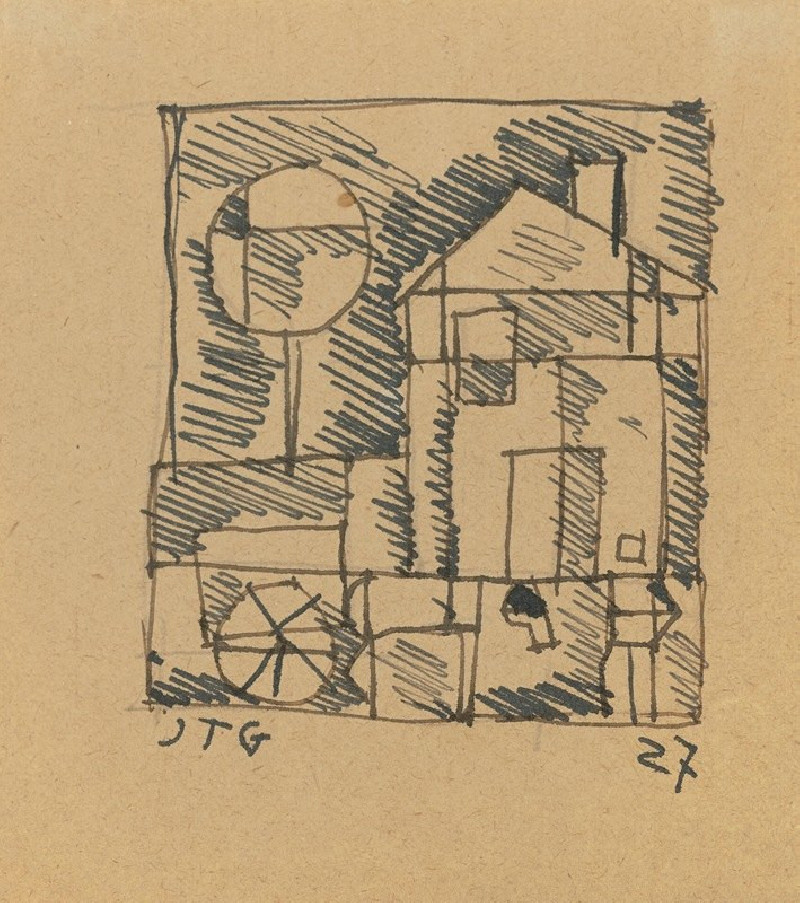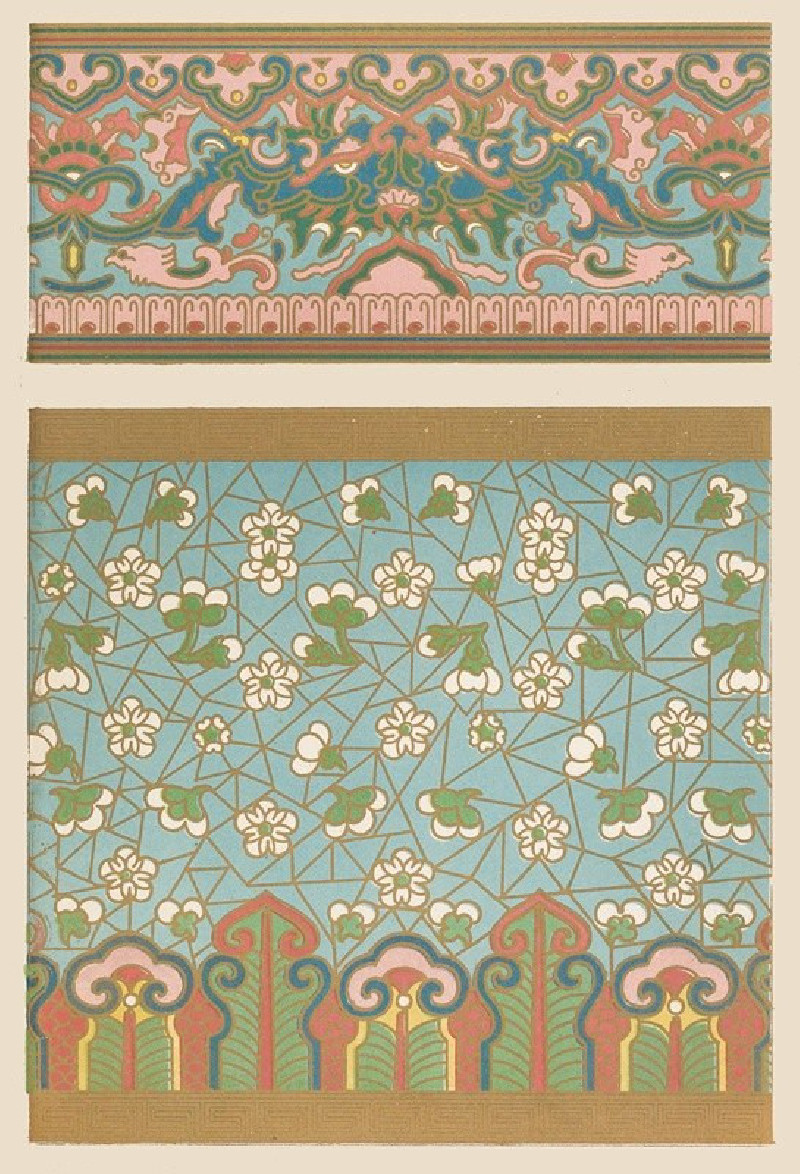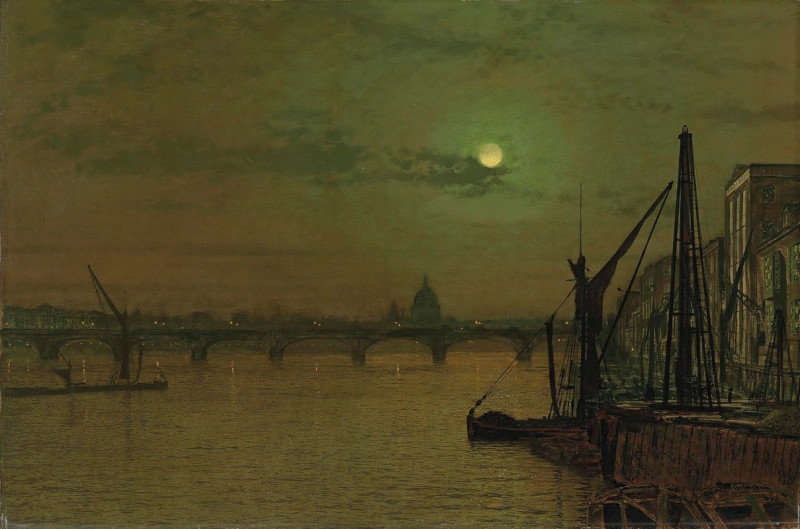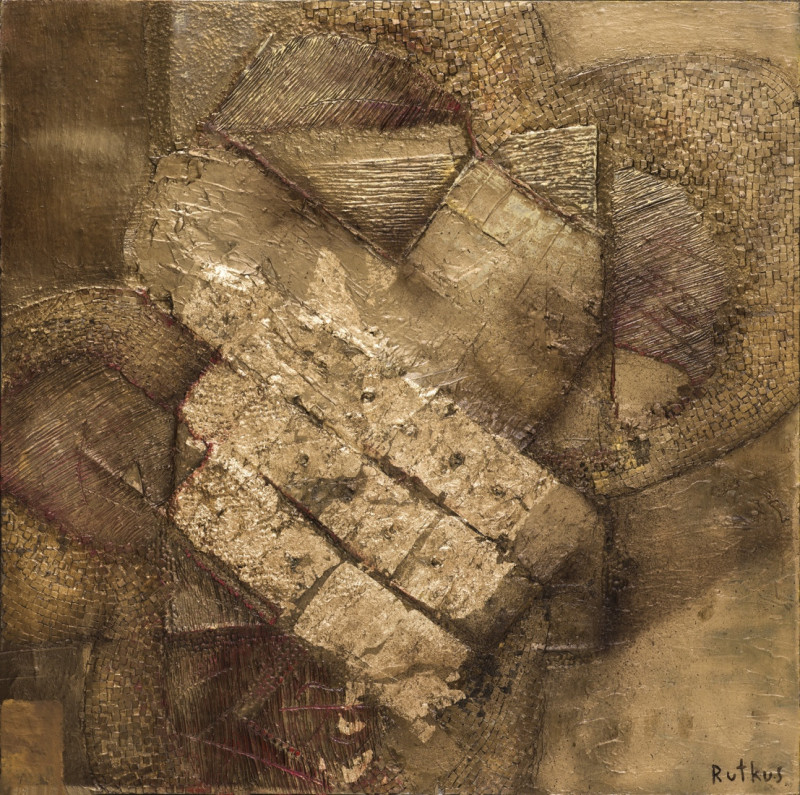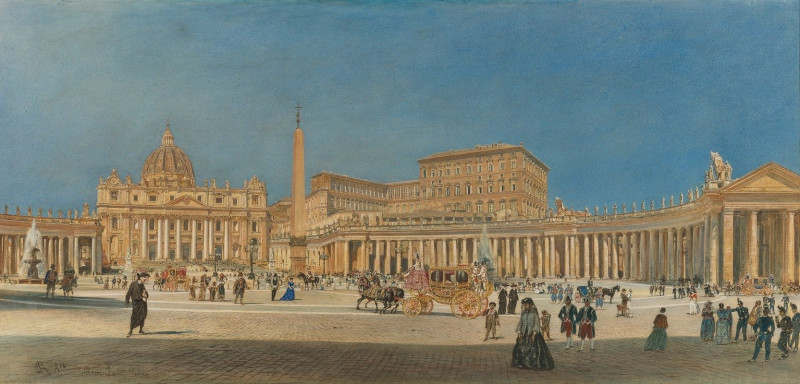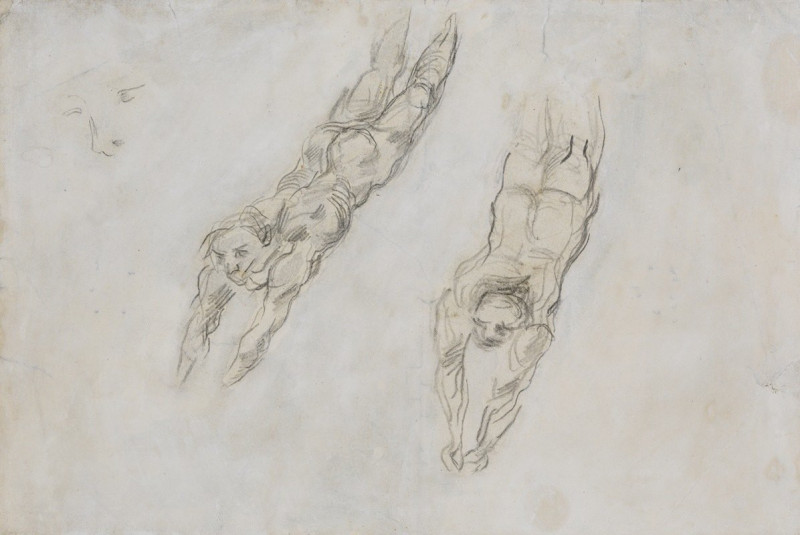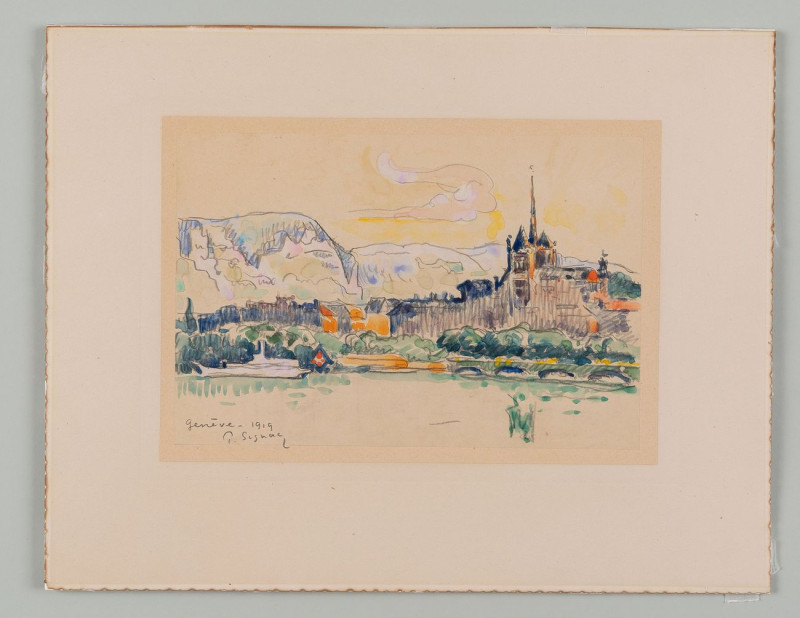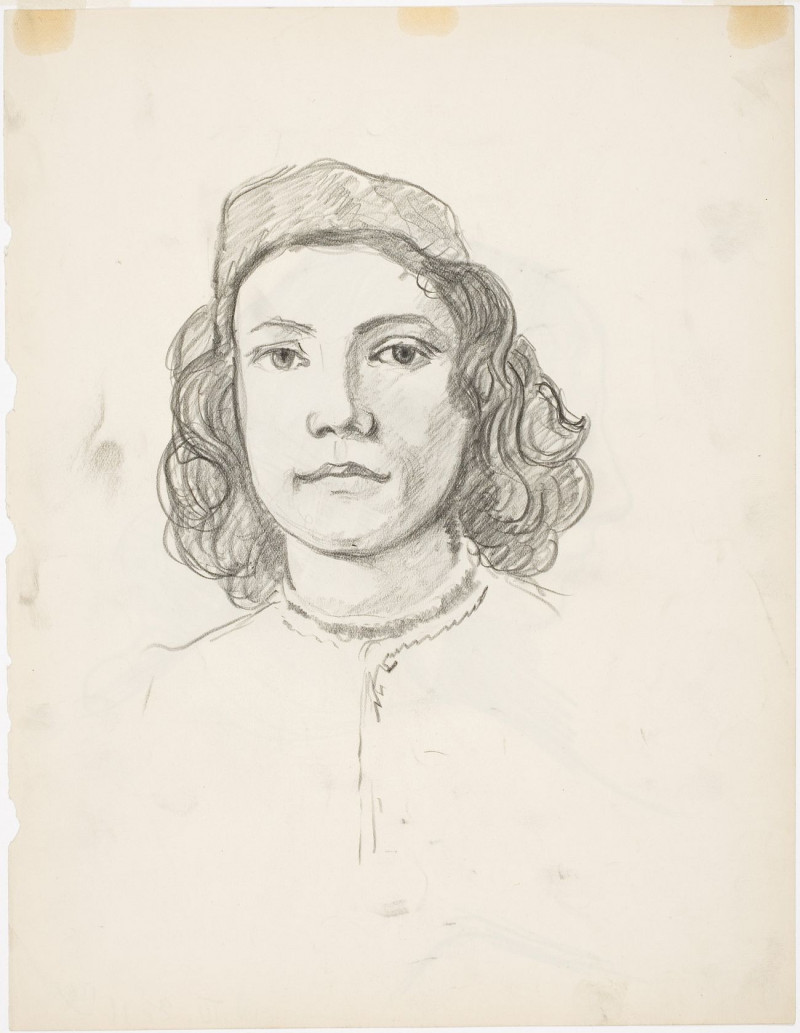Tulák na ceste (1924–1927)
Technique: Giclée quality print
Recommended by our customers
More about this artwork
Konštantín Bauer, a notable figure in the early 20th century art scene, captures the essence of solitude and the weary life of a wanderer in his evocative painting, "Tulák na ceste" ("Wanderer on the Road"), created between 1924 and 1927. This compelling piece uses a limited yet impactful palette of earthy tones to draw viewers into a moment of transient serenity and constant movement.The painting portrays a lone figure, presumably a vagabond, in mid stride. The use of rapid, expressive strokes gives life to the gnarled trees and swirling clouds, suggesting a breezy atmosphere. The wanderer, equipped with a long walking stick and a brimmed hat, progresses along a path undefined by the surrounding landscape. His posture and movement imply a long journey, possibly without a clear destination.The backdrop features blurry outlines of distant trees and what appears to be sails or standard poles, hinting at a vicinity to a shore or an open field. Bauer’s mastery in creating depth and texture with minimal color highlights his unique ability to convey complex narratives through simplicity. This painting not only reflects a physical journey but also hints at the broader human condition of seeking, exploring, and surviving amidst life's unpredictability.
Delivery
Returns
Konštantín Bauer was a Slovak painter.
Konštantín Bauer was born on November 24, 1893 in Slovenská Ľupča. He spent his childhood in Banská Bystrica. At the age of fifteen, he moved with his parents to Košice, where he graduated from high school. After graduating in mechanical engineering in Budapest in 1915, he worked briefly as an engineer in Novo Mesto pod Šiatrom. From 1916 to 1918 he worked as a railway engineer in Transylvania and then as a civilian employee at the Ministry of War in Vienna.

